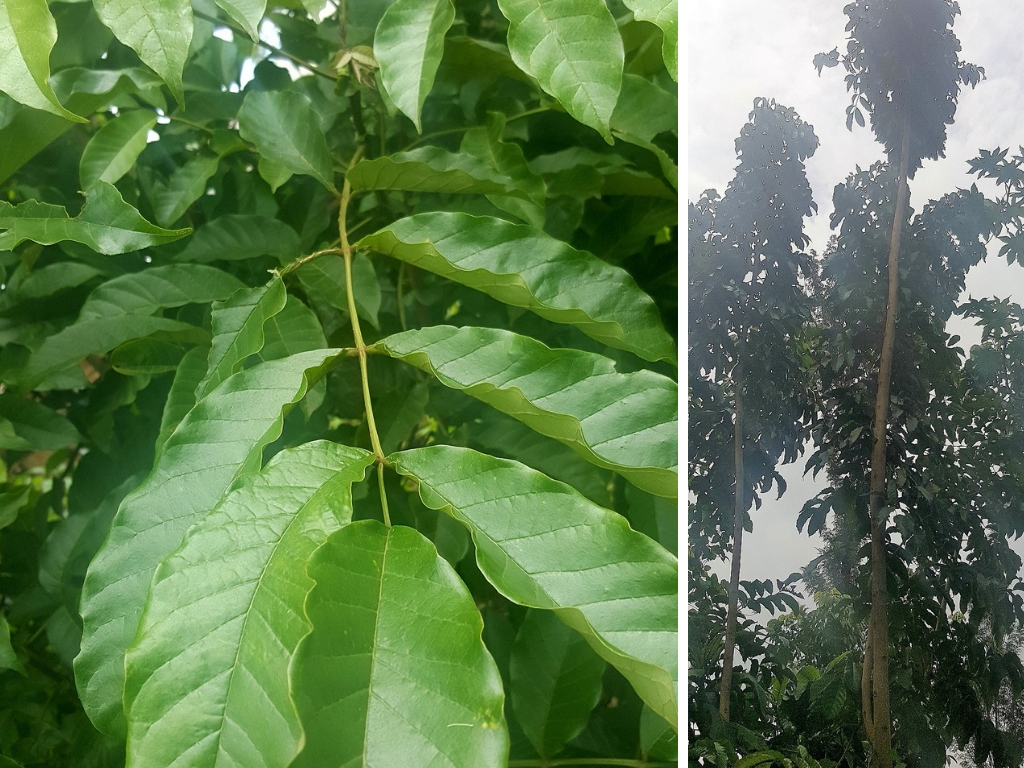Olusiola or kumusola or uluwovu is a tree native to the lands of the people of Mulembe. In Luhya folklore, one of the patriarchs of the Bukusu nation, Maina wa Nalukale blessed his descendants as he inherited them the land occupy today: ‘May you flourish like the kumusola tree,’ he said. And flourish they did, making use of olusiola tree to conquer the land. Find out how the Luhya have made use of this abundant resource.
Quick facts on kumusola / uluwovu / olusiola tree
| Scientific and common names | Scientific Name: Markhamia lutea. Common Name: Nile Tulip Tree |
| Name in Luhya language/ dialects | Kumusola (Bukusu); Uluwovu (Maragoli); Olusiola (other Luhya dialects) |
| Identifiable features | Evergreen tree. Grows almost always in groups as its seeds stubbornly propagate thriving even within the shade of the parent tree. |
Beyond marital issues, other cultural uses of olusiola tree in Luhya culture
The most eye popping use of olusiola tree comes from Maragoli culture where the tree served as decree absolute, or final order, in those rare circumstances when a marriage broke down. All the estranged husband had to do was barricade the door to the matrimonial home with branches from olusiola, and the rest he left to the gods. Learn more about olusiola tree and divorce among the Maragoli of the Luhya.
Building and construction
The branches of the kumusola tree are not only flexible when green, but also have remarkable strength. This makes the olusiola tree the perfect material for construction. It’s easy to bend and weave into supporting frames of our traditional houses. Also, given that kumusola a fast grower, almost like a weed, olusiola is readily available.
When brothers fight
Among the Maragoli sub-nation, a warning prevailed that if one had to fight with a brother, they never were to hit them with a stick from the olusiola tree. The reason being the Maragoli believe that getting a beating from a kumusola tree irreversibly damages the victim. By damage, we speak African in the sense that it is beyond the physical, mental or social – it’s equivalent to a curse.
Shrines and other sacred uses of kumusola tree
The kumusola tree was used by the blacksmiths of peri-colonial Bukusu as a shrine for offering sacrifices to their gods. Generally speaking, whenever the Bukusu slaughtered an animal for whatever cultural occasion, be it happy ones like khuboa chinyinja, traditional circumcision or sad ones such as funerals, the gods and living dead had to be appeased by being offered a share of the slaughtered animal.
As those chosen to appease the gods performed this offertory ritual, they would talk on behalf of the community seeking forgiveness and petitioning for individuals and groups. Indeed the word kumusola is a name derived from khusola, a Lubukusu word that means to advocate.
In keeping with this tradition, clans with musambwa of being blacksmiths, such as the Bayemba clan of modern day Bumula, often constructed a temporary hut-like structure near a chosen olusiola tree. Inside this structure, clan elders would house parts of the slaughtered animal needed to intercede for the living with the living dead and ancestors.
Within this temporary structure, there would be a king-post that had been sharpened to a point by the elders. During the ritual an intercessor would hook a piece of the slaughtered animal onto it. This meat served to appease the gods Wele Khakaba, Wele Mukhobe and Wele Murumwa so that they could continue blessing their children.
Mwirumbi
This blacksmith clan of the Bukusu nation, the Bayemba, routinely stored tools of their trade far from their homes. These at designated places called mwirumbi held the tools of their trade, lirumbi. The mwirumbi was commonly located under a chosen kumusola tree.
Seeds as toys
The seeds of this tree are give-or-take marble sized with a nice oval to round shape. They have a woody, hardy inner which you expose by removing the easy to peel seed covering. They are great for playing with as marbles or as the moving pieces in traditional games like Ajua (Bao).
Other uses
- Firewood
- Boundary tree
What it’s not ideal for:
Anything that requires strength when dry e.g as the handle of an axe / hoe or a a fencing king post as once dry, olusiola is weak and susceptible to rotting.
Subscribe to Mulembe Weekly
Get culture, language, stories and discussions in your inbox every Friday 5 PM East Africa Time


This is great work. We get to know our culture in-depth. Thanks alot.